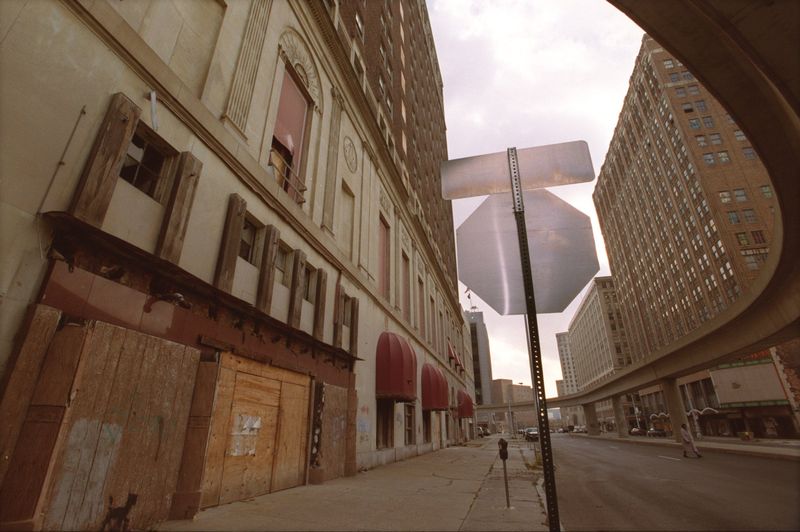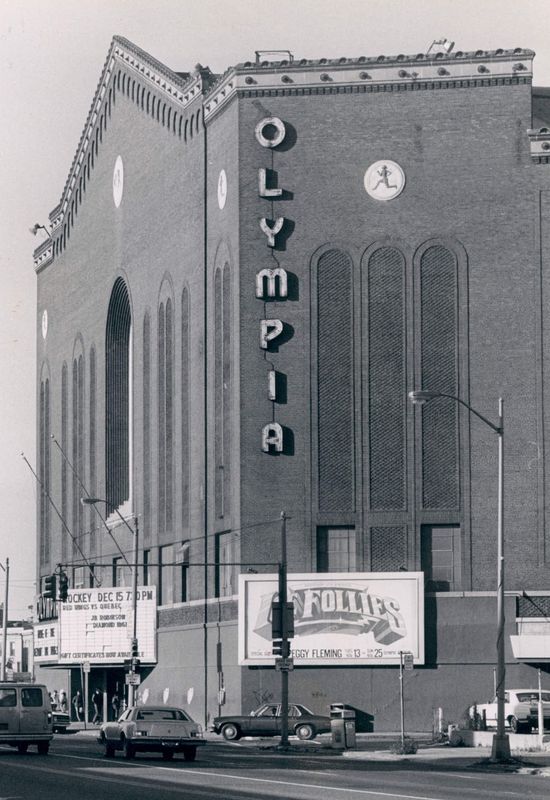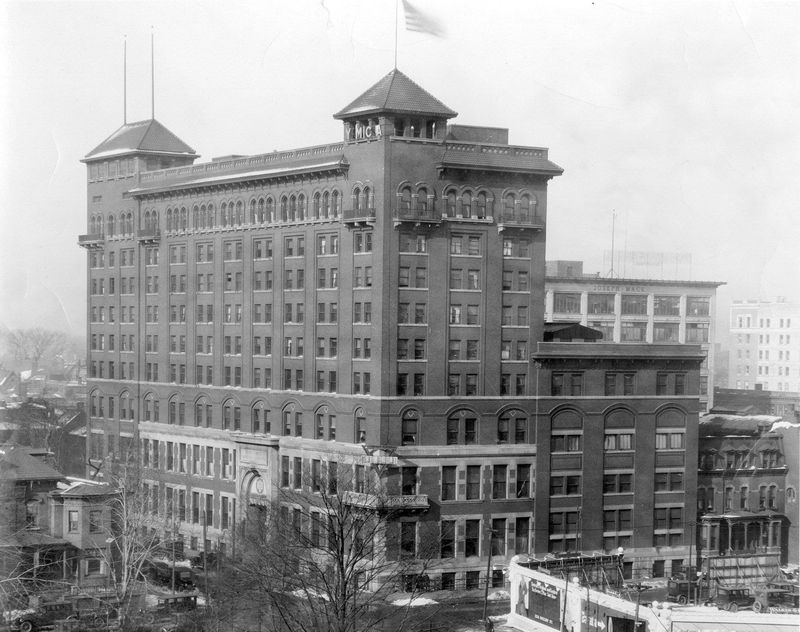They are gone but not forgotten.
Countless Detroit buildings have met the wrecking ball in recent decades, some better known and remembered than others. Here are a few of the more iconic addresses that are no longer with us in physical form, yet remain fountains of nostalgia for many residents, former residents and regular city visitors.

Tiger Stadium
The old Tiger Stadium at Michigan and Trumbull in the city’s Corktown neighborhood was home to the Tigers from 1912 to 1999. Many memories were forged there, including those of the 1984 World Series champion Tigers.
But the aging stadium lost its purpose once the Tigers relocated downtown to then-new Comerica Park in in 2000. Despite various efforts to preserve at least a part of the old ballpark, Tiger Stadium was completely demolished by September 2009.
Today, the former stadium site has been successfully redeveloped as a residential, commercial and recreational development. The centerpiece is the Detroit PAL (Police Athletic League) headquarters and baseball field, known as The Corner Ballpark.
Statler Hotel
The 800-room Statler Hotel in downtown near Grand Circus Park opened in 1915 and was one of most opulent hotels in the city for many years after. The hotel went through ownership changes and major drops in occupancy, yet managed to survive as a business until the mid-1970s.
The building was foreclosed on in 1979 for unpaid taxes and then stood vacant until it was demolished in 2005.
Since then, the former Statler site has been redeveloped as a seven-story complex of upscale apartments and ground-floor businesses and restaurant space, known as CBD Detroit Apartments, which opened during the pandemic in 2020.
Olympia Stadium
Olympia Stadium, fondly known as the Old Red Barn, was an arena with a red brick exterior that opened in 1927 at Grand River and McGraw. It was home ice for the Detroit Red Wings and saw the hockey team win seven Stanley Cups. It also hosted numerous concerts.
The venue became vacant in 1979 when the Wings moved to then-new Joe Louis Arena.
It was finally demolished in 1986. At the time, Free Press photographer Mary Schroeder described in a photo essay how the old arena “will be remembered by generations of hockey fans who watched the Wings from steep tiers of seats that rose from the boards at rinkside to the rafters.”
Joe Louis Arena
Named for Detroit’s most famous boxing champion, Joe Louis Arena opened in 1979 on the downtown riverfront after the city’s mayor, Coleman Young, succeeded in keeping the Red Wings from moving out to Oakland County. “The Joe” contained more than 20,000 seats and saw the Wings win four Stanley Cups.
The boxy and windowless venue not only hosted NHL games, but also numerous big concerts along with other sporting events and unique special events, including the 1980 Republican National Convention that nominated future President Ronald Reagan.
The venue’s final event, in July 2017, was a WWE “SummerSlam” wrestling extravaganza. The Red Wings then moved to the new Little Caesars Arena, and demolition of “The Joe” got underway in 2019 and concluded in 2020. The pair of demolition cranes that did the job were adorned with the names and jersey numbers of Red Wings greats Gordie Howe and Steve Yzerman.
Old downtown Detroit YMCA
The downtown branch of the YMCA was a massive building with 10 floors that stood at 2020 Witherell from 1909 until its demolition in 1997-98 to make way for Comerica Park. And unlike modern YMCAs, the building contained more than just workout facilities and offered affordable rooms for overnight stays or even long-term lodging.
Detroiters of all incomes and walks of life were still using the old building through the 1980s and much of the 1990s. A Free Press article from 1982 described how over 2,000 men a year were staying in one of Y’s rooms, either for a night, a week or even year-round. A few men had even been living there for 30 years.
The building closed in January 1997. A new downtown Detroit branch, The Boll Family YMCA, opened in 2005 at 1401 Broadway.
J.L. Hudson flagship store
The Hudson’s department store in downtown was a gargantuan building of some 2.1 million square feet that spread out over 32 floors. It opened in 1911 and reportedly saw over 100,000 daily customers at its peak.
Generations of Detroiters had memories of shopping in the building. Many also still remember the cafeteria and dining rooms, which served from a large menu that included Maurice salads.
The department store closed in early 1983 and was spectacularly demolished by implosion in 1998.
Today, the old Hudson’s site has been redeveloped by Rocket Mortgage founder Dan Gilbert as two new side-by-side buildings: a 12-story midrise with office, retail and events space and a 45-floor skyscraper that will house a luxury hotel and condos. The midrise recently opened and in January is to become the new global headquarters for General Motors. The skyscraper is expected to be done in 2027.
Mammoth building
This former three-story Federal’s department store opened in 1949 in northwest Detroit and became a landmark in the area. The building at 15401 W. Grand River, notable for a large exterior clock, later became a Kingsway store, and ultimately a large discount store known as Mammoth, which advertised itself on the side of the building as “The Saving Place.”
The building was connected by a pedestrian bridge over Grand River to Tower Center mall and a Forman Mills store. It never reopened after Mammoth closed in 2000. Amid a legal battle with the building’s owners, the city commenced demolition of the vacant structure this past August.
Contact JC Reindl: 313-378-5460 or jcreindl@freepress.com. Follow him on X @JCReindl
This article originally appeared on Detroit Free Press: These 7 iconic Detroit buildings are gone but not forgotten
Reporting by JC Reindl, Detroit Free Press / Detroit Free Press
USA TODAY Network via Reuters Connect







